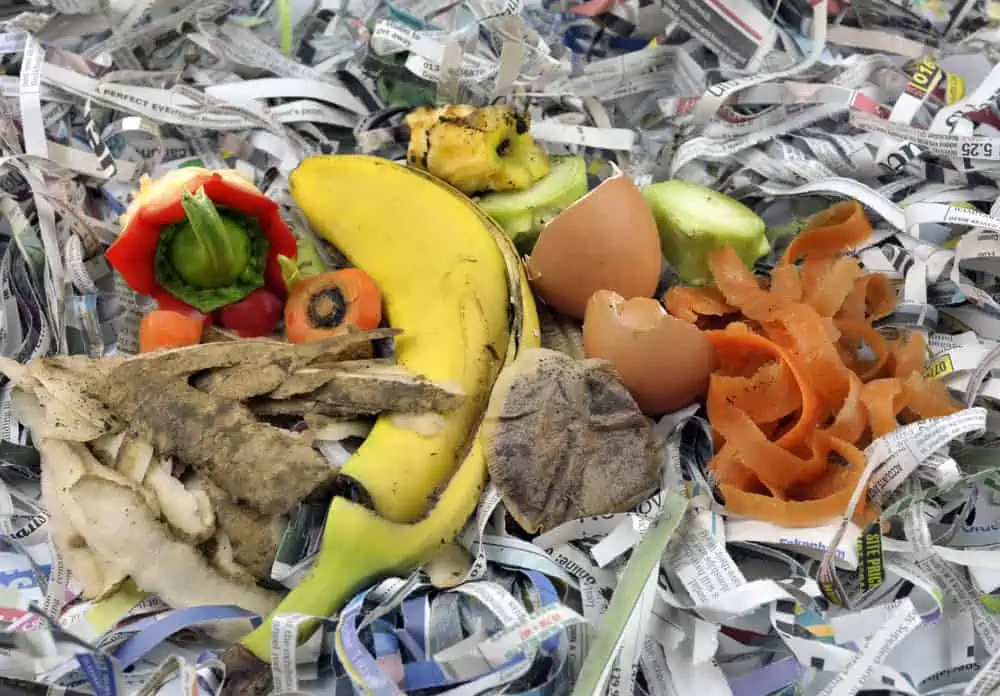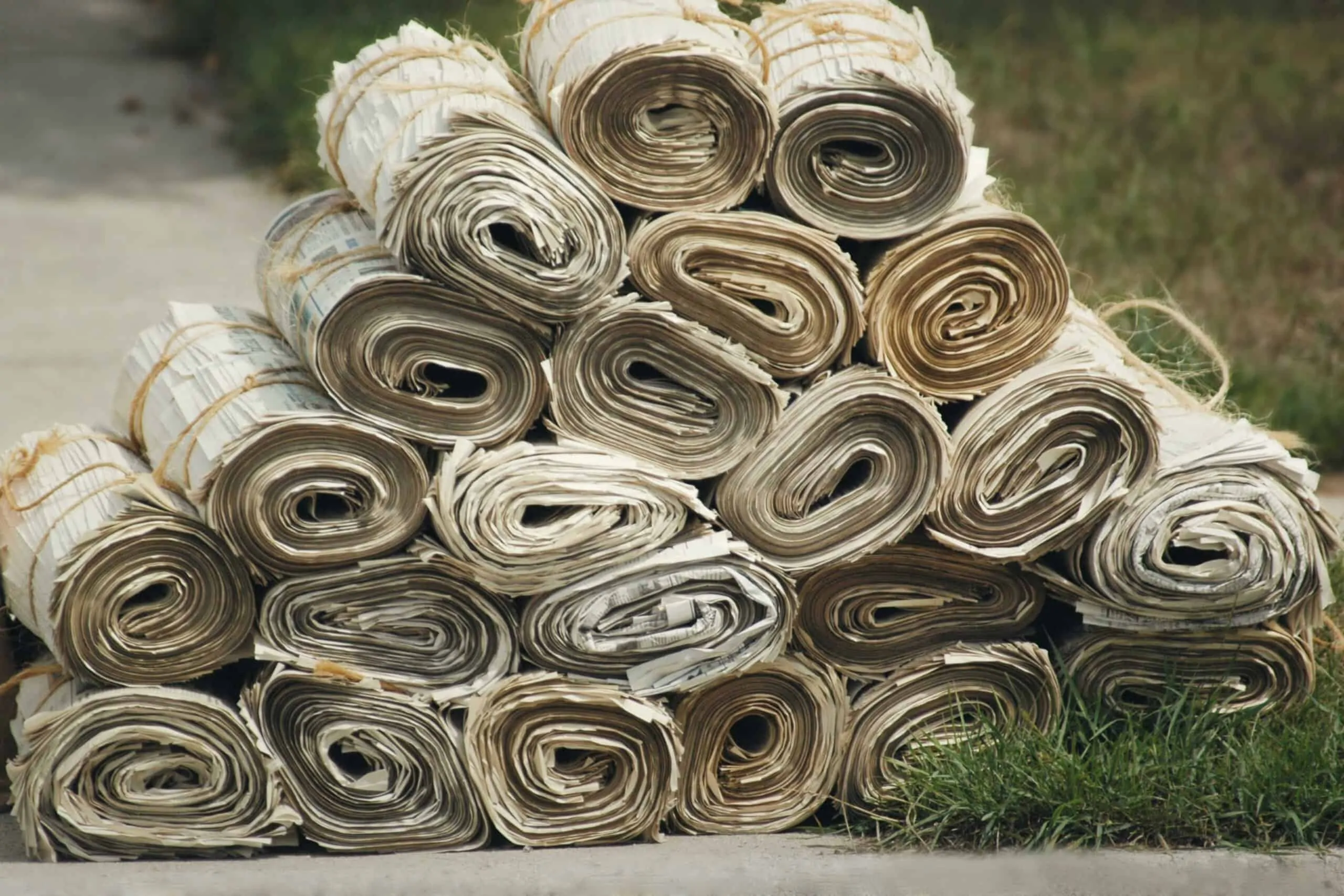As an Amazon Associate I earn from qualifying purchases.
As a gardener and sustainability-minded individual, it brings me grief to receive garbage in the form of junk mail. For many, figuring out the most environmentally-friendly manner to dispose of it can be a headache.
While certain junk mail is doomed for the landfill, others can save the trip and be composted right at home.
This is also the case for most newspapers and other booklets printed on newsprint. Coupons, magazines, and other materials with glossy coatings are not recommended for composting.
Composting Junk Mail
Unfortunately, there is no straight answer when it comes to composting Junk Mail. There is no regulation. standardization, or labeling when it comes to the materials used for Junk Mail so you just need to analyze it piece by piece.
For most homeowners, it may be easier to just recycle your junk mail and not deal with the sorting, but there are some rules of thumb that can help you decide if you are committed to composting your Junk Mail.
3 Tips For Composting Junk Mail
1. Avoid Glossy Paper
Glossy Paper typically contains synthetic materials that may never break down in your compost pile. While some might argue that some Glossy Papers are fine to compost, a general rule of thumb is just avoid it! Not only is the glossy finish usually synthetic, but many of these are highly colored with inks that may be toxic! This also applies to magazines.
2. Avoid Plastic
While this is pretty obvious, a lot of envelopes contain plastic. Remove the plastic before adding envelopes to your compost.
3. Junkmail On Newsprint is Compostable
Lots of Junk Mail is made from the same material as newspapers (which we’ll get to) but is perfectly fine to compost.
Composting Newspaper

As it turns out, most newspapers are 100% compostable and can be of value in your garden. Certain newspapers may have some pages made from non-compostable materials which should be separated.
Newspaper is made from a specific type of paper called “newsprint” which gives it its trademark color and feel. It is made from recycled materials and wood pulp that is manufactured into large rolls of paper for the purpose of printing. It is ideal for newspapers because its cheap, strong, and works well with the natural inks used in the printing process. It is not intended to be extremely long-lasting but is durable enough for its short-term intended use.
What about the Ink in Newspaper? Is it Toxic?
The largest concern for many people when it comes to composting newspapers is not the paper itself, but the ink which is printed on it. Historically you would have been right to be worried since inks were largely made from toxic materials and heavy metals but in modern times newspaper ink is actually 100% natural. The Ink used for printing newspapers today originates from soy and is the first choice for ink in the newspaper industry. Not only is it natural and safe, but it actually works more efficiently than most inks for this purpose!
I know many individuals will also wonder “is the Soy Ink GMO?”. More likely than not, yes the soy used for making ink probably comes from GMO soy. For some individuals hoping to maintain a strict organic practice, this might cause some moral issues, but as far as the health of you and your compost is concerned there is no real problem. The number of unhealthy residues from the GMO soy is insignificant in this context.
Is Newspaper Bleached?
Since the materials used for making newsprint don’t naturally create the light-colored paper that is necessary for printing, they do need to be processed to create a favorable and uniform color. While chlorine is a common way to bleach wood pulp, most newsprint is actually bleached using hydrogen peroxide. Hydrogen peroxide is harmless and easily broken down by microorganisms. While it’s more likely than not that hydrogen peroxide was used for bleaching, don’t overthink it. Most unfavorable compounds like chlorine become inert during the composting process.
Since newsprint is made from natural ingredients like wood pulp, it is totally capable of decomposing in your compost pile. While you probably won’t be using it in extremely large quantities it does act as a source of carbon for your compost pile.
How Do I Compost Newspapers?
Composting newspapers is easy, but there are ways to ensure that it breaks down more efficiently and provides a more favorable physical structure for your compost pile. If you have a stack of folded newspapers you don’t just want to throw them directly into a pile. The dense stacks of paper will clump up together when wet and create unfavorable conditions for your composting process. Not only will they probably form anaerobic conditions but the large mats of moist paper will be uncomfortable to work with when flipping your pile.
The best way to compost newspapers is to open them up and rip them into strips. Alternatively, you can also use a paper shredder if you have one available. Strips of paper will create a fluffy and light material that can be easily mixed into your pile and provide beneficial structure. Remember newspaper acts as a source of carbon, so it works well mixed with different nutrient-rich materials. It is also highly absorbent so it can be mixed into your compost pile when it’s too wet, just make sure your pile doesn’t dry out too much!
Other Ways to Use Newspaper in the Garden
I largely use newspapers as bedding for my worm-compost system. It provides an amazing physical structure and the absorbance makes it great to mix with the water-rich food scraps I feed my worms. It also works as bedding for other animals like chickens, sheep, pigs, etc.
Alternatively, one of the other great uses for newspapers is used as lasagna mulch. Lasagna or “Sheet” Mulch is a layer of material added above your soil and below your mulch to kill off any unfavorable weeds and prevent the growth of new weeds. It is typically done with cardboard but can easily be done with newspapers.
To use it as sheet mulch place your newspaper directly above your soil and stack it 1” or thicker over your bed or planting area. Cover it with mulch and water it in! Now you have a natural biodegradable, weed barrier!
Pro Tips For Composting Junkmail & Newspaper
Shred Everything First!
If you plan to compost a lot of Junk Mail or Paper in general (Bills, Homework, etc.) I highly recommend investing in a shredder. It will save you a lot of energy and provide you with wonderful material for your garden. The uniform pieces really make it easy to work with and the highly absorbent carbon-rich properties make it excellent for many uses.
When In Doubt, Throw it Out
This is a saying I took from learning to identify wild edible mushrooms, but it applies to composting as well! If you think you might have some toxic compounds or synthetic materials, just send them to the recycling facilities.
While I’m not EXTREMELY picky about what I compost, I avoid putting toxic substances, especially anything that may contain heavy metals into my compost. If you’re using your compost for ornamental plants it may not matter as much but I grow plants to have HEALTHY and PURE food in my home.
What About Other Forms of Papers?
The same rules of thumb apply to any form of paper you might get your hands on. Avoid glossy, synthetic, and overly colored materials! This includes magazines, posters, coupons, present wrappings, and labels.
Conclusion
Believe it or not, you can actually choose to not receive any junk mail delivered to your home! While companies sending out unsolicited Junk Mail to your home don’t need to ask you permission, there are ways you can legally deny their mail in the first place.
Since this is a guide about composting, we won’t go into too much detail about this process – but you can easily search online for how to opt-out of junk mail in your region. This usually involves making a call or filling out an online form that will add you to a list that prohibits companies from sending junk mail to your home.
While it may take a small effort on your part, this could actually have an extremely beneficial impact on your carbon footprint in the long run!

